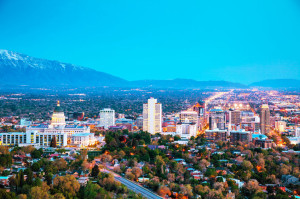What redistricting maps mean for Utah residents
 It was a contentious time for Utah lawmakers and those with a stake in government affairs. The state’s effort with public input and special legislative sessions to redo districts in the state was passed in mid-November by Gov. Spencer Cox.
It was a contentious time for Utah lawmakers and those with a stake in government affairs. The state’s effort with public input and special legislative sessions to redo districts in the state was passed in mid-November by Gov. Spencer Cox.
The reaction from this final boundary-redrawing effort has been split among party lines, with many on the left accusing those on the right of gerrymandering to secure more counted Republican votes across districts. The governor is quoted in Deseret News, meanwhile, in supporting the idea of having rural Utah represented in every district.
Here’s a look at some potential impacts from the redistricting you should be aware of as a public servant or elected official in the Beehive State.
Changes in congressional districts
According to Deseret News, one of the biggest changes was in Salt Lake County, which has now been divided into four different districts with the Sugar House, Millcreek, Holladay and Murray areas all represented. Provo’s district was also expanded to include Moab, Vernal, Sandy and Draper areas.
This has led to accusations of gerrymandering, as the results essentially carve up districts that were more left-leaning to show more balance, and in some cases dominance, for right-leaning residents. These are common features of the rural centers of Utah, as opposed to the larger cities such as Salt Lake.
The role of independent commissions
This is where many people believe that the Utah Legislature dropped the ball, and purposefully did so. As detailed by US News and World Report, the findings of the independent commission that was formed to get public opinion and redraw the maps were largely ignored by Utah lawmakers. This has led to a group called Better Boundaries, which advocates for fair Congressional redistricting, to form its own PAC to target the lawmakers who ignored the commission’s findings. They believe the conclusions were more independent than the final Republican-leading result.
US News notes that commissions in other states such as Arizona and Michigan feature residents only, whereas the Utah commission is like those in Ohio or Virginia and feature mostly politicians. “The truly independent commissions seem to be working so far. It’s the other ones where the questions are coming up,” says Christian Grose, a political scientist from the University of Southern California who’s leading research into redistricting.
Whether the result of the redistricting will be something that affects your district or board is something that you’ll have to watch closely, especially as it comes to how federal funding may help with services and programs. Ensuring that needed resources are established despite the prevailing political winds is always at the center of the work you do.
We can help with any questions you may have about how districts or boards work in Utah. Visit our website for more information.






